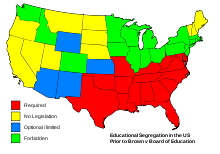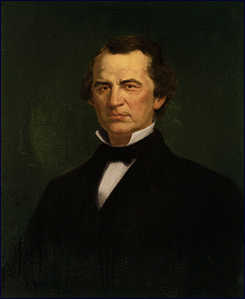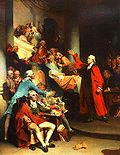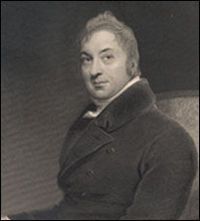On this day in 1935, T.E. Lawrence, better known as Lawrence of Arabia, dies from injuries sustained in a motorcycle accident near his home in Dorset, England.
Lieutenant Colonel Thomas Edward Lawrence, CB, DSO (16 August 1888 – 19 May 1935) was a British Army officer renowned especially for his liaison role during the Arab Revolt against Ottoman Turkish rule of 1916-18. The extraordinary breadth and variety of his activities and associations, and his ability to describe them vividly in writing, earned him international fame as Lawrence of Arabia, a title popularised by the 1962 film based on his First World War activities.
Lawrence was born illegitimately in Tremadog, Wales in August 1888 to Sir Thomas Chapman and Sarah Junner, a governess, who was herself illegitimate. Chapman left his wife to live with Sarah Junner, and they called themselves Mr and Mrs Lawrence. In the summer of 1896 the Lawrences moved to Oxford, where from 1907 to 1910 young Lawrence studied history at Jesus College, graduating with First Class Honours. He became a practising archaeologist in the Middle East, working with David George Hogarth and Leonard Woolley on various excavations. In January 1914, following the outbreak of the First World War, Lawrence was co-opted by the British military to undertake a military survey of the Negev Desert while doing archaeological research.
Lawrence’s public image was due in part to American journalist Lowell Thomas‘ sensationalised reportage of the revolt as well as to Lawrence’s autobiographical account Seven Pillars of Wisdom (1922).
Arab revolt
At the outbreak of the First World War Lawrence was a university post-graduate researcher who had for years travelled extensively within the Ottoman Empire provinces of the Levant (Transjordan and Palestine) and Mesopotamia (Syria and Iraq) under his own name. As such he became known to the Turkish Interior Ministry authorities and their German technical advisors. Lawrence came into contact with the Ottoman-German technical advisers, travelling over the German-designed, built, and financed railways during the course of his researches.
Even if Lawrence had not volunteered, the British would probably have recruited him for his first-hand knowledge of Syria, the Levant, and Mesopotamia. He was eventually posted to Cairo on the Intelligence Staff of the GOC Middle East.
Contrary to later myth, it was neither Lawrence nor the Army that conceived a campaign of internal insurgency against the Ottoman Empire in the Middle East, but rather the Arab Bureau of Britain’s Foreign Office. The Arab Bureau had long felt it likely that a campaign instigated and financed by outside powers, supporting the breakaway-minded tribes and regional challengers to the Turkish government’s centralised rule of their empire, would pay great dividends in the diversion of effort that would be needed to meet such a challenge. The Arab Bureau had recognised the strategic value of what is today called the “asymmetry” of such conflict. The Ottoman authorities would have to devote from a hundred to a thousand times the resources to contain the threat of such an internal rebellion compared to the Allies’ cost of sponsoring it.
At that point in the Foreign Office’s thinking they were not considering the region as candidate territories for incorporation in the British Empire, but only as an extension of the range of British Imperial influence, and the weakening and destruction of a German ally, the Ottoman Empire.
During the war, Lawrence fought with Arab irregular troops under the command of Emir Faisal, a son of Sherif Hussein of Mecca, in extended guerrilla operations against the armed forces of the Ottoman Empire. He persuaded the Arabs not to make a frontal assault on the Ottoman stronghold in Medina but allowed the Turkish army to tie up troops in the city garrison. The Arabs were then free to direct most of their attention to the Turks’ weak point, the Hejaz railway that supplied the garrison. This vastly expanded the battlefield and tied up even more Ottoman troops, who were then forced to protect the railway and repair the constant damage.
The capture of Aqaba
In 1917, Lawrence arranged a joint action with the Arab irregulars and forces under Auda Abu Tayi (until then in the employ of the Ottomans) against the strategically located but lightly defended town of Aqaba. On 6 July, after a surprise overland attack, Aqaba fell to Lawrence and the Arab forces. After Aqaba, Lawrence was promoted to major. Fortunately for Lawrence, the new commander-in-chief of the Egyptian Expeditionary Force, General Sir Edmund Allenby, agreed to his strategy for the revolt, stating after the war:
“I gave him a free hand. His cooperation was marked by the utmost loyalty, and I never had anything but praise for his work, which, indeed, was invaluable throughout the campaign.”
Lawrence now held a powerful position, as an adviser to Faisal and a person who had Allenby’s confidence.
The Fall of Damascus
The following year, Lawrence was involved in the capture of Damascus in the final weeks of the war and was promoted to lieutenant-colonel in 1918. In newly liberated Damascus-which he had envisioned as the capital of an Arab state-Lawrence was instrumental in establishing a provisional Arab government under Faisal. Faisal’s rule as king, however, came to an abrupt end in 1920, after the battle of Maysaloun, when the French Forces of General Gouraud under the command of General Mariano Goybet http://en.wikipedia.org/wiki/M… entered Damascus, breaking Lawrence’s dream of an independent Arabia.
As was his habit when traveling before the war, Lawrence adopted many local customs and traditions (many photographs show him in the desert wearing white Arab dishdasha and riding camels).
During the closing years of the war he sought, with mixed success, to convince his superiors in the British government that Arab independence was in their interests. The secret Sykes-Picot Agreement between France and Britain contradicted the promises of independence he had made to the Arabs and frustrated his work.
In 1918 he co-operated with war correspondent Lowell Thomas for a short period. During this time Thomas and his cameraman Harry Chase shot a great deal of film and many photographs, which Thomas used in a highly lucrative film that toured the world after the war.
Seven Pillars of Wisdom
Lawrence’s major work is Seven Pillars of Wisdom, an account of his war experiences. In 1919 he had been elected to a seven-year research fellowship at All Souls College, Oxford, providing him with support while he worked on the book. In addition to being a memoir of his experiences during the war, certain parts also serve as essays on military strategy, Arabian culture and geography, and other topics. Lawrence re-wrote Seven Pillars of Wisdom three times; once “blind” after he lost the manuscript while changing trains at Reading railway station.
The list of his alleged “embellishments” in Seven Pillars is long, though many such allegations have been disproved with time, most definitively in Jeremy Wilson‘s authorised biography. However Lawrence’s own notebooks refute his claim to have crossed the Sinai Peninsula from Aqaba to the Suez Canal in just 49 hours without any sleep. In reality this famous camel ride lasted for more than 70 hours and was interrupted by two long breaks for sleeping which Lawrence omitted when he wrote his book.
Lawrence acknowledged having been helped in the editing of the book by George Bernard Shaw. In the preface to Seven Pillars, Lawrence offered his “thanks to Mr. and Mrs. Bernard Shaw for countless suggestions of great value and diversity: and for all the present semicolons.”
The first public edition was published in 1926 as a high-priced private subscription edition, printed in London by Roy Manning Pike and Herbert John Hodgson, with illustrations by Eric Kennington, Augustus John, Paul Nash, Blair Hughes-Stanton and his wife Gertrude Hermes. Lawrence was afraid that the public would think that he would make a substantial income from the book, and he stated that it was written as a result of his war service. He vowed not to take any money from it, and indeed he did not, as the sale price was one third of the production costs. This left Lawrence in substantial debt.
Death
At the age of 46, two months after leaving the service, Lawrence was fatally injured in an accident on his Brough Superior SS100 motorcycle in Dorset, close to his cottage, Clouds Hill, near Wareham. A dip in the road obstructed his view of two boys on their bicycles; he swerved to avoid them, lost control and was thrown over the handlebars. He died six days later on 19 May 1935. The spot is marked by a small memorial at the side of the road.
The circumstances of Lawrence’s death had far-reaching consequences. One of the doctors attending him was the neurosurgeon Hugh Cairns. He was profoundly affected by the incident, and consequently began a long study of what he saw as the unnecessary loss of life by motorcycle dispatch riders through head injuries. His research led to the use of crash helmets by both military and civilian motorcyclists.
Moreton Estate, which borders Bovington Camp, was owned by family cousins, the Frampton family. Lawrence had rented and later bought Clouds Hill from the Framptons. He had been a frequent visitor to their home, Okers Wood House, and had for years corresponded with Louisa Frampton. On Lawrence’s death, his mother arranged with the Framptons for him to be buried in their family plot at Moreton Church. His coffin was transported on the Frampton estate’s bier. Mourners included Winston and Clementine Churchill and Lawrence’s youngest brother, Arnold.
A bust of Lawrence was placed in the crypt at St Paul’s Cathedral and a stone effigy by Eric Kennington remains in the Anglo-Saxon church of St Martin, Wareham
On this day on 1896, the six ton chandelier of the Palais Garnier falls on the crowd resulting in the death of one and the injury of many others. The falling of one of the counterweights for the grand chandelier resulted in the death of one person.
The Palais Garnier, known also as the Opéra de Paris or Opéra Garnier, but more commonly as the Paris Opéra, is a 1,600-seat opera house on the Place de l’Opéra in Paris, France, which was the primary home of the Paris Opera from 1875 until 1989. A grand building designed by Charles Garnier in the Neo-Baroque (or “Baroque Revival”) style (it is also said to be of the related Second Empire style), it is regarded as one of the architectural masterpieces of its time.








 On this day in 1937,
On this day in 1937,  On this day in 1934,
On this day in 1934, 
Recent Comments